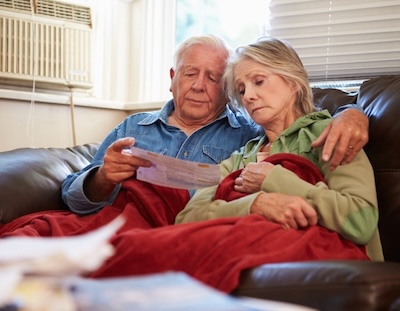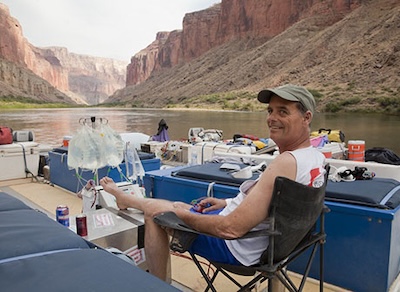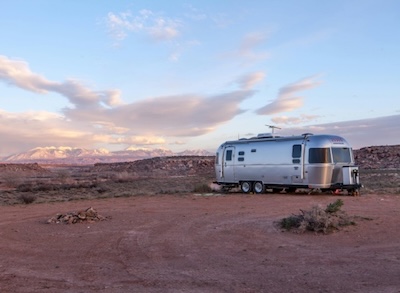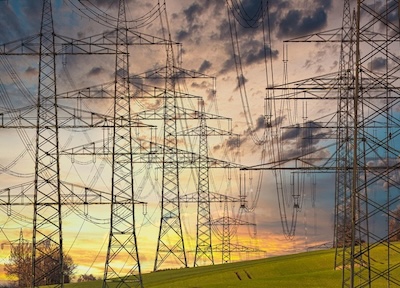When “Home” Isn’t Simple

This is Home Dialysis Central, so it’s pretty important that every blog post we write connects to home dialysis somehow. And that makes sense. I have a basic question, though: What does the word “home” actually mean? To elaborate, I wonder:
What does “home” look like for you?
When you read about home dialysis, what do you picture in your head?
Do you envision a certain type of space? Certain types of people?
Could “home” be a feeling that conveys levels of both comfort and/or control?
Or…is it something else?
Just like “home” looks different for different people, the implementation of any home-based medical care (dialysis included) changes entirely depending on the circumstances. There is a wide subjective spectrum of what can be considered “acceptable” or “realistic” and that spectrum is often misunderstood.
One reason home dialysis uptake remains lower that we would like it to be is, in my opinion, due in part to the assumption that only people who fit into an idealized vision of what a “home patient” looks like can manage the responsibility. The rest can’t be offered it at all. This is simply not true. And, it’s unfair.

The Haves
Let’s start at one end of the spectrum.
The Haves are people with stability. Their finances, housing and social structure are steady. Their homes are owned or securely rented, and their bills are paid on time. They live within their means, and have things like income, savings, insurance, and transportation. If something breaks, it is safe to assume that it will be fixed or replaced in short order. If someone needs a ride, another family member is usually available to assist. They can receive deliveries, buy the things that they need, and store the things they own.

I’ve had many patients from the Haves group do home dialysis. Some transformed entire rooms in their homes into luxurious looking treatment suites. They installed water rooms, and built closets to house machines and supplies. I have seen people design both man-caves and beautiful spa-like retreats complete with recliners that power-recline, heat, and perform deep tissue massage. One of my former patients could have had a reality show on HGTV called Home Dialysis Couture because that was her way of making the best of a difficult situation.
I genuinely love seeing people reclaim control and comfort in this way. But, I also know these patients—the Haves, represent the “exceptional,” and not the typical patient.
The Middles
Then, there are the Middles, who represent most of the patients I’ve worked with.
These folks might own their own homes, or they may rent. They usually have jobs (or sources of stable income) and can manage okay through a few short disruptions, but a major life-threatening illness or job loss could destabilize their entire lives. These patients have resources, but they’re finite. A big car repair, trip to the emergency veterinarian, or any other unanticipated expense can cause shockwaves to their budget for months. An increase in rent might risk blowing the budget completely.

A choice of home dialysis and the subsequent planning here can take negotiation and compromise. Sometimes, the patient needs to work with their landlord and clinic to oversee and approve plumbing modifications. Other times, patients may have to budget to purchase heavy plastic storage bins to store their supplies. There is often limited space for supply deliveries, so shipping and storage considerations need to be addressed prior to patients completing training. I’ve seen clinics cover the fees for twice-monthly orders, patients store boxes under the dining table covered with an oversized tablecloth, and patient’s domiciles resemble warehouses because a delivery was made without functional understanding of the space.
The upper portion of the Middles spectrum looks a lot like the lower portion of the Haves’, but the margin for error is much thinner. One lost paycheck, one hospitalization, one new crisis, and the line between stability and deep struggle dissolves.

The Have-Nots
Next, there are the Have-Nots.
A TikTok I watched recently said that everyone should be poor for 5 years as an exercise in empathy and real-life experience. It was intended to be tongue-in-cheek, but the point stands—poverty is an education you can’t fully understand unless you’ve lived the experience.

The Have-Nots are also part of a spectrum. Some have housing but live on the brink of losing it. Others face daily choices between rent and electricity, between food and transportation, or between making rent for the month or eating for the week. Some have homes that are physically unsafe—I’ve had patients live in homes with unstable flooring, unreliable heat or no air-conditioning. I’ve had patients with COPD live up several flights of stairs in subsidized apartments with no working elevator, patients who heat their homes in the winter by baking bread, and rural patients who chose home dialysis in part because transportation to a center was too expensive or burdensome. Some patients have no residence, some live in cars, and some live in shelters.
The Have-Nots are not automatically excluded from home dialysis. But for this group especially, the conversation must start with, and be paced by, what matters most to the patient overlayed with what is practical and feasible given the circumstances. Inadequate and unaffordable housing is a vast social problem that unfortunately does not limit itself to the able-bodied and healthy.
The Outliers
Finally, there are the Outliers—the people who define and then re-define what dialysis can look like.
Some live full-time in RVs, do daily home HD, and travel the country documenting their experience (Shoutout to Dawn and Jimmie Bates!) Others travel by cars or planes and do treatments in hotels using NxStage machines. Some patients schedule “transient” treatments at nearby clinics when they are out of town. There are campers who have taken dialysis into the wilderness, and let’s never forget everyone’s favorite story about how Bill Peckham did solo home HD on a raft in the Colorado river. To get the US government to pay for dialysis in the first place, Shep Glazer did a treatment on the floor or Congress in 1971. So, I want to point out that none of these ideas are “new,” and that doing dialysis in non-medical settings has always been a thing.

Companies have formed to provide in-house “home” dialysis at skilled nursing and rehabilitation facilities, as well. I’m not sure where that fits in my categories, but it’s absolutely worth mentioning.

On this website, we celebrate these adaptations often and use them as pinnacle examples to prove that dialysis doesn’t have to be as life-limiting as it so often is. Dialysis can be integrated into adventure, travel, freedom, and many different lives.
But I think it’s worth asking: if something can be done temporarily and safely (i.e., a person on vacation doing dialysis in a hotel) could it also be done long-term and safely for another person whose “outlying” situation isn’t by choice (i.e., a person who is unhoused doing dialysis in a hotel)?
If not, why? What are the true differences?
What is “Home” Enough?
Housing instability is one of the strongest social determinants of health. The shortage of affordable housing touches nearly every community, but it hits hardest for people already living at, near, or below the poverty line—which is consequently the exact same population most affected by chronic illness.
As costs continue to rise for food, housing, and healthcare, many people who were once comfortable as Middles are poised to slip downward. For dialysis programs, that means an ever-increasing number of patients who will have less conventional or less secure living arrangements. This affects patient choice, and it affects patient outcomes.
So, what is it that defines “home” in home dialysis?
Is it the presence of physical structure: a roof, four walls, and a mailing address? Or, is it any environment that can safety support safe treatment? Could it be a mix of both?
Some people live in hotels long-term because they have nowhere else to go. Is there a meaningful difference between dialyzing in a hotel while on vacation and dialyzing in a hotel because it’s your only option for somewhat stable housing?

What about people who live in cars, campers, or community shelters? What about those experiencing functional homelessness (“couch-surfing”) and moving every few weeks while temporarily staying with others?
We don’t always have these answers readily available in healthcare. Again, it’s not black and white, it’s a spectrum. Medicare and Medicaid covers the cost of the treatment itself, not the roof, the outlet, the electricity, or the water required to make that treatment possible. What would happen if we were to re-think that?
Practical Realities
Housing instability doesn’t just make receiving healthcare inconvenient, it shapes what is accessible and thus what is possible.

Home dialysis, with the exception of CAPD, requires electricity. Also, all patients need potable water, plumbing, a clean environment, safety, and consistent storage. If any of those components are missing, safety and reliability become compromised. These barriers aren’t ever all-or-nothing—many of them can be addressed creatively if the patient has a genuine desire to do so and a strong support structure.
When space is limited, smaller and more frequent deliveries can help. Plastic trays or other portable barriers can create a clean medical workspace in very tight quarters. Some PD patients in developing countries do treatments safely in conditions that are far less ideal than what is experienced in most US homes, yet they succeed because they have guidance, motivation, and support. So, could the techniques used in those environments translate to our Have-Nots’?
I am not advocating for the lowering of standards, but I am suggesting that we rethink standards with empathy. “Adequate” housing in reality might not look like it does in a magazine or in our imaginations. Adequacy of a space should be determined by whether treatment can be done there safely, consistently, and with appropriate follow-up rather than whether the surroundings match a biased expectation.
Sometimes, what we label as “non-compliance” is actually a reflection of limited finances or logistical barriers to treatment. It’s difficult to follow medical advice when you’re making choices between electricity and rent, or when donated food is shelf-stable and extremely high in sodium but the only option available to you. Until we recognize the reality each person lives in, we risk placing blame on patients and causing guilt and shame for circumstances that are beyond their control.

Personal Thoughts
I don’t ever pretend to have all the answers. Poverty, housing and food insecurity, and our medical system are enormous and deeply complex problems that are far beyond my scope of influence for solving. But, dialysis patients are uniquely vulnerable, and I do know a little bit about advocating on their behalf. The patients we serve rely on electricity, water, and equipment for survival in a very literal way. That dependence means that unstable housing hits them even harder.
Nephrology as an industry can’t fix all of the crises surrounding our patients, but we can make space for flexibility, compassion, and truly creative problem-solving. We can realize that for some, “home” is a concept more than it is a physical place. And, we can understand that supporting patients sometimes means adapting our expectations to the situation rather than lowering or expectations or closing off options.
Community housing programs for fragile medical populations exist in some forms elsewhere in the world. For example, New Zealand set up “community hemodialysis houses” in 2004 to support patients who lived in substandard housing or in areas where home dialysis was not feasible. New Zealand already has high rates of home dialysis, so the community house idea was intended to extend modality choice to more people.

Patients were offered rooms in secure, non-medicalized, and un-staffed homes that were already set up for home treatments. In the first decade, 113 patients had been trained for home HD and lived in the community houses. The patients’ mortality risks and quality of life scores were on par with patients who dialyzed in their own homes. Most of the patients, were receiving 20 or more hours of dialysis per week and/or doing nocturnal treatments. These programs still exist! Here is a YouTube video about it: https://youtu.be/GE_2kzoGhe0?si=SDHWEbyLGGIoGC2L
If we look at this example, we can get a glimpse into what would be possible if medical care and housing support combined to better support patients in crisis.
Imagine if we applied that thinking and those social morals here in the US?! If safe, supportive living spaces for dialysis patients were available to all patients, it could save lives, reduce hospitalizations, build resilience, and restore dignity. Because, in reality, no one should have to choose between food, electricity, and survival. No one should be excluded from or have to give up the potential benefits of home dialysis simply because the reality of “home” doesn’t fit the traditional definition. We should all care about and strive for that.
Home is Where We Live
Home dialysis is about physiology, independence, control, dignity, and quality of life. It’s about possibility. But, it’s also about infrastructure and planning. Without the necessary ingredients of shelter, water, and electricity, the feasibility of home dialysis falls apart.
As advocates and supporters of home dialysis and patient choice, we can do better by expanding how we think about “home.” The question isn’t just, “Does this person have a house?” but, “Does this person’s environment allow them to live safely?”
I am curious to hear stories about what others have experienced at the intersection between housing and home dialysis. Do you have any (deidentified) stories to share? Have you had to re-think your view of “home” for certain patients? How have you used creativity and empathy to problem-solve for challenges like these?

Healthcare doesn’t end at the doorway of the clinic. If we want to make home dialysis truly accessible to everyone, we have to start by making sure we have a system that makes sure everyone has a place—any safe place—where living is possible, treatment is integrated, and life continues. All patients have the right to live the best life they are capable of living. We have the obligation to support that right as much as we can.


Comments